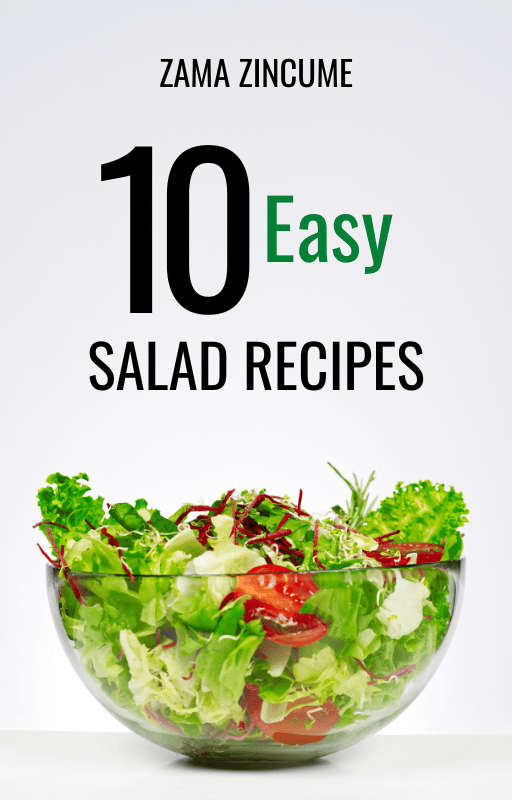Selling Information: A Guide to Unlocking Your Potential

This article is a comprehensive guide on selling information.
It will help you navigate the exciting world of selling information products.
You can turn your knowledge into a profitable venture.
Why is that so?
Information has become one of the most valuable commodities.
People constantly seek knowledge, solutions, and expertise.
They do this to enhance their lives and achieve their goals.
Now
Ready to unlock your full potential?
Understanding The Growing Demand For information
In today’s digital age, information is more valuable than ever.

(An example of an eBook info product)
People want information on how to lose weight, build a website, or start a business.
This growing demand presents a unique opportunity.
People with knowledge and expertise can share it.
A friend of mine is nuts about cricket.
Dinah knows everything about the cricket world.
So, I encouraged her to sell this information about cricket. And she did!
To her surprise, money flowed into her coffers.
An opportunity to create and sell more info products became available.
“Selling Information” is the ultimate guide to unleashing your hidden talents and reaching new heights of success.
Discover proven strategies, tips, and insights to help you tap into your fullest potential in knowledge sharing and monetization.
The Benefits And Opportunities Of Selling Information
Selling information offers many benefits and opportunities.
Imagine the feeling of finally harnessing your expertise to make a difference in people’s lives while generating a lucrative income. This guide will show you strategies and tips to transform your passion for sharing information into a profitable endeavour.
Firstly, it allows you to make money on your expertise.
(Did you catch Dinah’s venture?)
Instead of keeping your knowledge to yourself, you can turn it into a profitable business.
Secondly, selling information is scalable after you create the product.
A product such as an eBook, online course, or webinar, you can sell it repeatedly without more effort.
Online Courses
Let’s look at online courses.

What are the best online courses that you can offer?
The following are a few examples to help you get started:
- Health courses:
These include nutritional planning, weight loss, and allergy treatment. Health courses include fitness and strength, meal planning, running, and yoga.
- Career courses:
Career courses have gained traction in online classes.
The courses cover these topics:
- Salary negotiation, leadership,
- Promotions,
- Resume writing, j
- Job interviewing,
- Career change and finding a dream job.
- Business courses:
For years, these were the courses that spread on the internet.
Courses cover many topics. These include website building, branding, and sales funnel creation. They also cover social media, email marketing, copywriting, and conversion optimization. Plus, they cover PR and selling.
- Arts and crafts courses:
The Etsy platform has been a trailblazer in this category of courses.
You can offer online courses here.
They are in painting, knitting, calligraphy, and pottery. They are also in sketching, sewing, crocheting, furniture restoration, illustrating, and woodwork.
- Personal finance courses:
These courses show lots of expertise.
They cover real estate investing. They also cover personal finance and retirement planning. They also cover renting houses, family financial planning, and money management.
- Relationship courses:
Someone once said what people do or don’t do is their business.
There has been an explosion of relationship courses.
Courses include dating and online dating. They also cover communication, LGBT, religious groups, breakup recovery, and managing family relationships.
- Personal development courses:
They include speaking and social skills. Also, stress and networking. Productivity, energy healing, happiness, spirituality, mindset, and creativity.
Online courses are scalable.
They don’t need you to create new products. But you can sell the same course many times. You can do this using scalable marketing strategies. For example, search engine optimization and advertising.
Selling information allows you to make a positive impact on people’s lives.
Selling information products can have an impact on:
Digital Literacy
As we embrace the digital age, fostering digital literacy becomes essential. You should be able to navigate and check information.
Social Media
Social media has a multifaceted impact on our lives. Social media affects our mental health and behaviour.
Remember, the sharing of information shapes our world. It affects education, commerce, relationships, and personal well-being.
You can help others achieve their goals and solve their problems. Provide valuable information.
Selling information allows you to make a positive impact on people’s lives.
You can help others achieve their goals and solve their problems. Provide valuable information.
Identifying Your Expertise: Unleashing Your Potential
Evaluating Your Skills and Knowledge
The first step in selling information is identifying your area of expertise.
What are you knowledgeable about? What skills do you have?
Take some time to check your strengths and passions.
Consider your professional experience, hobbies, and personal interests. This self-reflection will help you uncover your unique expertise.
For example, I like good food and reading.

Also, give me anything related to health, nutrition and preventative medicine. I can help you with anything in these categories.
Can I turn that into an info product?
Yes
But one needs to find the audience.
Identifying Your Niche Market
Once you know your areas of expertise, it’s time to identify your niche market. Who are the people who would benefit the most from your information?
How to Find Your Niche
Finding the right niche for yourself can be challenging.
If you are struggling to find your direction, here is a step-by-step process to help you:
- Identify your interests
Knowing your interests is a crucial first step.
What do you enjoy doing in your free time? What subjects do you like learning about?
If your field is boring, it may be time for a change. It becomes easier when you enjoy the work and stay motivated.
- Identify problems for solution.
The primary purpose of any business or service is to solve a problem for its customers.
Take the time to brainstorm and conduct market research. Use tools like Google Trends to generate potential ideas. Find something that aligns with your interests and see how to fill any loose ends in the market.
- Focus on specific individuals.
It’s okay if what you offer interests only some people. Instead of reaching everyone, focus on attracting customers who share your values.
Targeting a specific audience makes it more likely to build brand loyalty. It also makes it more likely to create a profitable business.
- Experiment
Finding your niche is like shopping for shoes.
You don’t usually buy the first pair you try on; you explore different options.
Similarly, when searching for your niche, consider experimenting with other approaches.
For example, if you want to run an online business or e-commerce store. Find ways to boost search engine visibility. Attract customers directly to your small business.
- Gather feedback
If you need clarification on your niche:
- Start conversations and seek input.
- Ask your family, colleagues, and potential customers about their needs and insights.
- Focus on something other than making money initially.
Making money is the ultimate goal of any business.
But putting only a little financial pressure on yourself is essential. It takes time to become profitable, so focus on building a solid foundation first. This step is critical.
- Analyse competitors
Take note of what your competitors do to help shape your strategies, branding, and content. However, ensure that your work remains original and unique.
- Discover your Uniqueness.
What sets you apart?
The USP could be anything from the design of an app to the ingredients in a cookie.
Let your creativity shine, and consider what makes your product or service stand out.
- Put Your Product to the Test
Test your niche to determine if it is correct.
Testing your concept before rolling it out is your best move.
Only spend more money on targeting your market after first testing the success of your idea.
You can gain exposure to other ideas by creating a website.
You can gain exposure by participating in business fairs. Showcase your own.
- Reassess your chosen niche.
There is always room for improvement.
Regularly reflect on and answer questions such as:
Is your business idea profitable?
Who is your target audience?
What solutions are you offering consumers?
Successful businesses regularly evaluate and readjust their strategies.
Explore Different Niches For Information Products
The key to success is not selling products to a broad audience. Instead, it is focusing on specific niche markets.
Specific niches reduce competition, and you can saturate your market.
Here are some popular niches for information products:
- Fitness and weight loss
- Dating and relationships
- Health and lifestyle Pets and animal welfare
- Self-care and self-improvement Wealth building and finance Beauty and fashion
- Parenthood
- Beliefs or spirituality Cultural integration or adaptation
- Languages
- Travel, wanderlust, or digital nomad culture
- Food and nutrition
- Blogging or vlogging secrets
- Art and design
- Meditation or relaxation
Define your target audience. Understand what your audience wants, needs, desires, and pain points.
Narrow your focus.
Creating Valuable Information Products: A Step-by-Step Approach
Researching and Gathering Information
Before making your information products, conduct thorough research.
Look for existing resources, articles, and studies related to your expertise.
The research will enhance your knowledge.
It will also help you find gaps and opportunities in the market.
Gather valuable and up-to-date information.
The research will serve as the foundation for your information products.
Structuring and Organizing Your Content
Organizing your content is crucial for delivering a clear and concise message.
Divide your information into logical sections or chapters.
Use headings and subheadings. Include bullet points to make your content easy to skim and digest.
Remember, you aim to engage your audience with valuable information.
Choosing the Right Format: eBooks, Courses, or Webinars
There are various formats you can select for selling information.
eBooks are great for delivering written content.
Online courses provide a more comprehensive learning experience.
Webinars offer real-time interaction and engagement.
Some formats, like webinar recordings, naturally include videos.
But the choice is up to you for formats like online courses.
Some products only offer written content, like e-books or email courses without videos.
These products are usually more affordable than multimedia products.
To decide what works best for your audience and topic, consider these questions:
- Does your audience need you to price your product within a specific range?
- If your audience consists of college students, they may need help to afford a $297 online course. In that case, consider a monthly subscription or a lower-cost option like an e-book.
- Which format would make it easier for your customers to learn the material?
- Teaching Photoshop through an e-book might be challenging. Users might need help to follow each step. In this scenario, an online course with videos would be more effective.
- Which format do you feel most comfortable teaching in? Remember, you can excel in any format with practice and determination.
Consider your target audience’s preferences and your skills.
Are People Learning Differently?
It is critical to understand people learn through different modalities.
It is imperative to understand this.
There are various models of how individuals prefer to learn and process information.
One common framework categorizes learning modalities into four types.
- Visual Learning (Spatial):
Visual learners prefer images, diagrams, charts, and other visual aids. They use them to understand information.
They often enjoy watching videos, looking at pictures, and using colour-coded notes.
- Auditory Learning:
Auditory learners learn best through listening. They often enjoy lectures, discussions, and other forms of spoken information.
These individuals may prefer verbal explanations. They may find it helpful to discuss ideas aloud.
- Reading/Writing Learning (Linguistic):
Learners who prefer reading/writing enjoy written words.
They may like to read books. They might take notes and engage in written exercises to enhance their understanding.
This modality is often associated with a strong preference for reading and writing.
- Kinesthetic Learning (Tactile):
Kinesthetic learners are hands-on experience and physical activities.
They enjoy actively manipulating objects. They enjoy engaging in experiments. They enjoy participating in movement activities.
These individuals often need physical involvement to understand and remember information.
Examples of 4 Learning Modalities
Visual Learning (Spatial)
- Watching educational videos or documentaries.
- Using mind maps, charts, and diagrams to organize information.
- Creating and using flashcards with visual elements.
Auditory Learning
- Listening to lectures or podcasts.
- Participating in group discussions or study groups.
- Explaining concepts aloud to oneself or others.
Reading/Writing Learning (Linguistic)
- Reading textbooks, articles, or written instructions.
- Taking detailed written notes during lectures.
- Engaging in written exercises, essays, or journaling.
Kinesthetic Learning (Tactile):
- Conducting experiments or hands-on activities.
- Using manipulatives or physical objects to understand concepts.
- Role-playing or simulations that involve physical movement.
Many people fall into more than one category.
Instead, they may have a combination of preferences. They may also have a dominant modality with secondary preferences.
Effective teaching and learning often involve using a variety of methods. They cater to different learning styles.
Remember that individuals often have a combination of preferences.
Use this information to determine the most suitable format for your information products.
Building Your Brand: Establishing Trust and Credibility
Defining Your Unique Selling Proposition (USP)
Define your unique selling proposition to help you stand out.
This definition is important because the information sales market is competitive.
What makes you different from others offering similar information? Identify your USP and communicate it to your audience.
It could be your specific approach. It could be your extensive experience. Or, it could be a particular method you’ve developed.
Developing an Engaging Personal Brand Story
People connect with stories. Develop a compelling personal brand story that resonates with your target audience.
Share your journey, struggles, and successes.
Let your audience know why you are passionate about helping them. Also, tell them how your expertise can make a difference in their lives.
Authenticity and relatability go a long way in building trust.
Showcasing Social Proof: Testimonials and Case Studies
Building credibility is essential when selling information.
Showcase social proof through testimonials and case studies.
Ask satisfied customers for testimonials. Have them highlight the value they gained from your information products.
Also, share case studies.
Prove how your knowledge has helped others reach their goals.
This evidence will instil confidence in potential buyers.
Remember, selling information is not just about the content itself. It’s about how you present it.
Inject your personality, passion, and wit into your information products.
Make it relatable and easy to understand, and above all, don’t take yourself too seriously.
Unlock your potential and start sharing your knowledge with the world!
Marketing and Promoting Your Information Products: Reaching Your Target Audience
Creating a Comprehensive Marketing Plan
When selling information products, a well-crafted marketing plan is essential.
Knowing your target audience is critical. And also understand your audience’s needs and interests.
Then, outline your marketing goals and strategies to reach them.
Always keep in mind that your success depends on creating and maintaining customers. Your focus must be on customer satisfaction.
Include a variety of online and offline tactics. Use social media campaigns and email marketing.
Remember, a comprehensive marketing plan is the key to promoting your information products.
Here’s another aspect…
Selling information products online can increase your sales and reach. Here are the steps and strategies:
1. Create Valuable Information Products:
Develop high-quality products that address specific needs or solve everyday problems. These products could include eBooks, online courses, webinars, or coaching sessions.
2. Choose the Right Platform. Decide where to sell your products. You can pick sites like Sellfy, Payhip, Teachable, or Gumroad.
3. Build a Professional Online Presence:
Create a website for your product or develop a landing page and optimize it for search engines.
4. Leverage Social Media:
Put your products and market them on platforms like Facebook, Instagram, and Twitter. Engage with your audience.
5. Content Marketing:
Create a blog and promote content for your product. Use email marketing to share updates.
6. Affiliate Marketing:
Set up an affiliate program. Have others promote your products and offer commissions for successful sales.
7. Paid Advertising:
Create ads on platforms like Facebook, Google Ads, or Instagram. Use retargeting ads to reach interested customers.
A century ago, Stuart Britt believed that doing business without advertising was foolish. He said it was like winking at a girl in the dark. Only you know what you are doing.
You’ll succeed if you advertise.
8. Collaborate with Influencers:
Develop partnerships with influencers or bloggers in your niche. They will endorse your products and boost credibility.
9. Offer Discounts and Limited-Time Deals:
Create urgency by offering limited-time discounts or bonuses to encourage buyers to act.
10. Collect Customer Reviews and Testimonials: –
Display positive reviews on your website to build trust and encourage purchases.
Remember to be consistent and persistent. See what works and focus your strategy on those systems for your audience.
There are other effective ways to promote your information product.
Include a variety of online and offline tactics. Use social media campaigns and email marketing.
Remember, a comprehensive marketing plan is the key to promoting your information products.
Utilizing Content Marketing to Attract and Engage Customers
Content is king, especially in the world of information products.
Create valuable and engaging content.
Start a blog, create informative videos, or even host a podcast to share your knowledge.
Your content is more helpful and relevant. People are more likely to trust you and consider purchasing your information products.
Exploring Paid Advertising Channels
Content marketing is great for organic growth. Sometimes, you need an extra boost to reach a wider audience.
Paid advertising channels, like Google Ads or social media ads, can help you use targeted ads.
Use targeted ads to reach your customers.
Experiment with different platforms and ad formats. Find the best channels for promoting your information products.
Remember to set a budget and track your results to ensure you get a return on your investment.
Leveraging Online Platforms: Maximizing Your Sales Potential
Setting Up an E-commerce Website
To maximize your sales potential, consider setting up your e-commerce website.
The website gives complete control over your customer experience. It allows you to customize your sales process.
Choose a user-friendly platform like Shopify or WordPress.
Optimize your website. Enable your website to be easy to navigate and have seamless checkout.
Remember to boost your credibility by including compelling product descriptions. Also, use captivating visuals and customer testimonials.
Utilizing Online Marketplaces and Platforms
Besides your website, use online marketplaces and platforms to expand your reach.
Platforms like Amazon, Udemy, or Etsy can provide a ready-made audience and infrastructure. You can use them to sell your information products.
Research the platforms that align with your niche. Explore their requirements for sellers.
Diversifying your sales channels increases your odds of reaching a wider audience. It also helps you generate more sales.
Optimizing SEO and Keywords to Boost Visibility
Want to get noticed online?
Optimize your website and product listings. Optimization will help search engines.
Conduct keyword research using tools like SEMrush. Identify popular search terms for your information products.
Add these keywords to your website content, titles, and meta descriptions.
Additionally, focus on building quality backlinks. Improve your website’s loading speed for better search engine rankings.
Mastering SEO will increase your visibility. SEO will enable you to drive more organic traffic to your information products.
Managing Customer Relationships: Ensuring Customer Satisfaction and Repeat Business
Providing Exceptional Customer Support
Customer support is crucial for maintaining satisfied customers and fostering repeat business.
Be responsive to inquiries. Provide clear and detailed answers. Go above and beyond to resolve any issues.
Multiple support channels can help customers feel well-cared for. Examples include email, live chat, and a dedicated support phone line.
Building and Nurturing Long-Term Relationships
Focus on something other than making a sale. Aim to build long-term customer relationships.
Engage with them through personalized emails. Also, use social media interactions or exclusive membership communities.
By nurturing these relationships, you increase the likelihood of repeat purchases. You also increase the possibility of positive word-of-mouth referrals.
Collecting and Utilizing Customer Feedback
Customer feedback is valuable for improving your information products and overall customer experience.
Encourage customers to leave reviews and testimonials or complete surveys to gather insights.
Use this feedback to make necessary adjustments, address shortcomings, and enhance your offerings.
Remember, happy customers become loyal advocates for your brand.
Scaling Your Information Business: Strategies for Growth and Expansion
Diversifying Your Offerings
To scale your information business, consider expanding your offerings.
Create more products or services that complement your existing ones. They should cater to different customer needs.
You can choose advanced courses. You can also select consulting services or physical products that fit your niche.
Diversifying your offerings expands your revenue streams. It also attracts a broader range of customers.
Collaborating with Influencers and Industry Experts
Working with influencers and industry experts can increase your visibility and credibility.
Look for people or groups with a big following and influence in your field.
Explore opportunities for partnerships, guest blog posts, or joint ventures.
Their endorsement or involvement can help you reach a larger audience. It can also increase trust in your information products.
Automating and Streamlining Your Processes
Automating and streamlining your processes is essential. It ensures efficiency as your business grows.
Use tools and software to automate email marketing. Also, use them for customer support and order fulfilment tasks.
These tools free up your time to focus on more strategic aspects of your business. For example, you can focus on product development and marketing.
Automating some tasks allows you to scale your information business without overwhelming yourself.
Selling information offers a unique pathway to unlocking your potential. It also helps you monetize your expertise.
You can create valuable information products by following the steps in this guide.
You can also build a solid personal brand. Then, market your offerings to a targeted audience.
You can build lasting customer relationships. Do this by earning trust and credibility in your niche.
This character will help expand your business.
Conclusion
Dive into “Selling Information” today and embark on a journey towards realizing your true capabilities!
Let your knowledge become a valuable asset that benefits others.
It will bring financial rewards and personal fulfilment.
Start your journey today. Unlock your potential to sell information.
What steps are you going to take to monetize your expertise today?
Tell us by leaving a comment right now.
